In 2001 I lived in Baltimore, Maryland, and among other places, worked at the American Visionary Arts Museum (AVAM). The following is my recollection of 9/11. I want to thank my friends in Baltimore for supplementing this account.
On September 11, 2001 I got up earlier than usual because I had to leave my house at 8 a.m. in order to get to the University of Maryland at College Park by 9. I was going to represent the American Visionary Art Museum at a volunteer recruitment the university was hosting for area nonprofits and other organizations. College Park is about 30 miles south of Baltimore, another nine miles north of D.C., and the closer I got to the university, the more densely packed the traffic became.
I was listening to NPR and about five miles or so before I got to my destination, I heard Robert Siegel announce that a plane had hit the North Tower of the World Trade Center in New York. My immediate take on the matter was, “What a dumbass. Who would run into something so obvious?” And, seeing no real reason for concern, I kept on driving. Seconds before I turned off the highway at the exit for the school, Mr. Siegel announced that yet another plane had crashed into the World Trade Center. When he said it, there was a slight tremor of panic in his usually reassuring voice.
Although I heard his words clearly, I refused to register their import; if what he said was true, then it would be much too horrible to bear. Surely he had misspoken and had meant to say rain instead of plane. That was it. It was raining on the Twin Towers.
A minute or so later, I pulled into the parking lot where we had been instructed to wait for the bus that would pick us up and take us to the recruitment center. Nobody else was there. I got out of my car, sat on the curb and started to open a V8 when a woman ran up to me screaming and crying inconsolably. I couldn’t fully understand what she was saying, she was crying so, but I think she said her brother or her husband was there today, there at the Twin Towers. I remember she was bowled over, clenching her fists and just crying, crying, crying. I didn’t know what to do, and just stood there with my arms dangling by my sides. Oblivious to what had really transpired, I thought to myself, really, her carrying on this way is a bit much. It was a relief to see other people arrive.
When the bus dropped us off at the recruitment center, a woman greeted us at the door and told us to help ourselves to breakfast, which I did. Afterwards I wandered around looking for the AVAM’s booth and on the way to it, I passed another one, whose banner read “F.B.I.” It was empty, and would remain so.
About this time the news of what had happened was starting to spread and the news we had heard concerning mere plane wrecks was taking on a more menacing tone. For a few minutes, people stood about in small groups nervously speculating on what had happened, when someone in another room let out a loud sob.
Like a herd of skittish cattle, we quickly merged into one stampeding mass and mindlessly rushed toward the source of the sob. We eventually found ourselves in a student lounge with a bank of five television sets along the back wall. A group of people were positioned in front of them, some crying hysterically, some standing frozen in disbelief. I lingered in the back of the room and tried to take in all five of the TV sets all at once, with the five talking heads, the five incendiary graphics (ATTACK ON AMERICA! ATTACK ON AMERICA! ATTACK ON AMERICA!), and the five Pentagons in flames. It’s hard to take in this much visual stimuli at once on a normal day, let alone one when your eyes are blurred by tears.
In the meantime, the recruitment organizers were wrangling back and forth over on whether or not to cancel the event. Personally, I thought it was obvious why they should cancel it. First of all, no volunteers had shown up. Secondly, you controlling freaks, it’s the end of the world. Nobody wants to volunteer for a nonprofit when it’s fu%*ing Armageddon outside.
After thirty minutes of this, they decided to let us go, and the bus took us back to our cars. On the highway, the traffic was worse than ever with the cars, at times, not moving at all.
I turned the radio on and as I did, my dear friend Michele Norris gently let me know that yet another plane had crashed, but this time in a field in Pennsylvania. Uhhh, my chest was starting to hurt, I couldn’t breath. The car seemed like a moving target, and I wanted to jump out of it and run.
All the way back to Baltimore I imagined a WWIII scenario. More than anything I wanted desperately to get back home to Texas, but because of the war, there would be gas shortages, and I would have to walk most of the way, which I was very willing to do. I thought about where I would sleep, and where would I find food? Would the ATMs work anymore? I have a Bank of America card. They have their money kiosk everywhere, so maybe that wouldn’t be such a problem.
When I drove into the city, rather than go home to my crappy little row house apartment, I decided to head into work at the museum.
It never occurred to me that the AVAM might be closed.
The American Visionary Art Museum is located on Key Highway right across from Baltimore’s Inner Harbor. The Inner Harbor is a big tourist attraction, with shops, restaurants, museums, an aquarium and dragon and swan paddleboat rides. A couple of hours after the Twin Towers were attacked, the Baltimore World Trade Center, which is located on the Inner Harbor as well, received what were believed to be credible bomb threats. Because of the threats, almost every museum and business within the area was evacuated and closed.
Almost every museum, except for the one I worked in.
My boss, in her own very thoughtful and special way, decided that the closure of every business and every museum in our immediate vicinity was a good thing, because it presented an incredible window of opportunity for the AVAM. As the only open venue in the tourist district, she imagined the museum would attract record audience numbers, possibly making more money in a single day than the museum had in its combined history.
Well of course staying open makes perfect sense, wouldn’t you agree? I mean, if I were from out of town, scared out of my wits, under the impression that the country was under attack by hostile outside forces, the first place I would want to go to would be a cultural institution located in an area that was fixin’ to blow sky high.
Four people came to the museum that day—two grandparents who brought their two grandkids in the hopes of finding a more pleasant alternative to sitting in front of a TV set watching people plummet to their deaths from the windows of New York’s towering inferno of a Trade Center.
When I got to the museum, a lot of the employees, including staff and a hired installation crew, were up in the third floor library glued to the television. I went up there and sat at a table next to my friends. There were plates of food in front of us, but no one had any appetite.
The reception on the television was terrible, and people kept taking turns holding the antennae in place. You would think that because the scenes of devastation were so horrific, we would have preferred static to clarity, but such was not the case.
Odd as it may seem, that very day the installation crew was supposed to begin installing an exhibition presciently titled The Art of War and Peace. Like most of us, the crew was also too freaked out to work.
Their reluctance to start the job irked our head preparator to no end. “You aren’t being paid to sit on your asses watching TV! There are deadlines to be met! The show is opening in three weeks! Those hijackings didn’t take place in Baltimore! You’re pussies! Quit crying like little girls!”
(O.K., he didn’t say that exactly.)
Unable to insult the crew into volition, the preparator sped off in the museum’s van to a men’s shelter located down the street, where he hired half a dozen guys for the day. Recovering alcoholics to the man, they were in need of something to restore their dignity, and nothing does that quite like hard work and money. And alcohol. Don’t forget alcohol. Which by the way they got, as he took them to a bar for lunch.
Fact of the matter, end of the world or not, there really was too much going on at the museum for us to sit there unoccupied in front of the television set.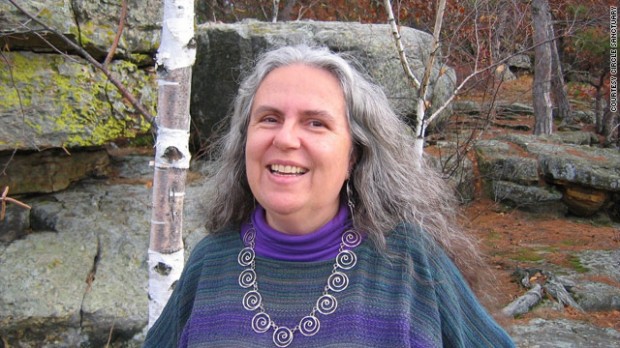
In addition to The Art of War and Peace, we also had to prepare for the most annoying fundraiser of them all, “The Great Goddess Sleepover.” The “Goddess” fundraiser featured masseuses and fortunetellers and prominent feminist speakers, and attracted an especially annoying set of patrons—big-boned, middle-aged white women who dyed their graying locks orange or maroon, and who adamantly insisted that they were either witches or could channel Venusians or were reincarnated from Native Americans, and who spelled their names without vowels, or called themselves Raven or Elk, and who wore flowing purple caftans doused with copious amounts of patchouli and topped with a king’s ransom of silver and turquoise and amber.
There was also the upcoming “Summit on the Future: A Peacemaker’s Forum,” which was either part of the stupid Goddess fundraiser or was being presented in conjunction with The Art of War and Peace. I’m not really sure which. I can’t remember anything about the actual event at all, but nonetheless, it was the preparation for the Summit that would give us work for our idle hands. There was an invitation to be assembled, addressed and stamped, and fortunately this was the kind of work that would allow for a lot of TV watching on the side. The invitation had a special component—a pair of rose-colored John Lennon-style sunglasses—and it was our task to transfer two press type words onto the lenses of each pair.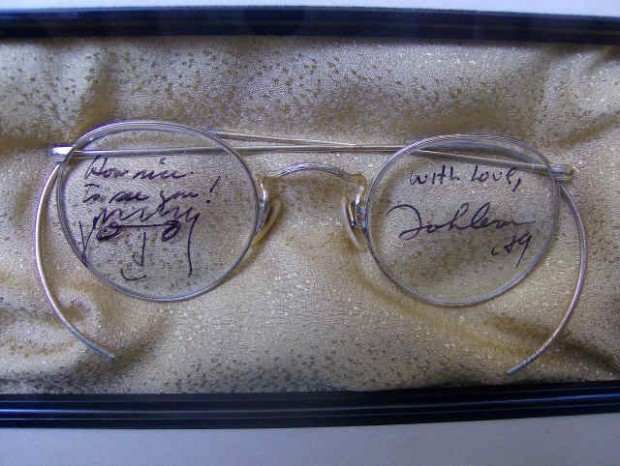
And so, over the next couple of days, we sat there in front of the TV, watching people hurl to their deaths from windows, watching skyscrapers melt over and over again into piles of noxious waste, watching people pinning up Xerox pictures of their loved ones in the hope that they had escaped the devastation, watching pundits and politicians point fingers and call for war. And as we watched, we sat up there in the library intent upon our pointless task of burnishing onto the lenses of hundreds and hundreds of rose-colored glasses the most ironic of phrases, whose manifestation is most hoped for, rarely attempted, never sustained—the first word of which was “imagine” and the second word of which was “peace”.
__________________________________
Beth Secor is an artist and a writer.


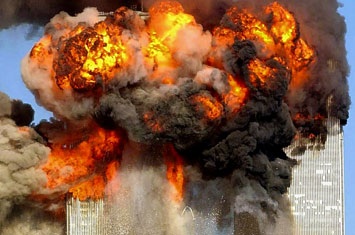
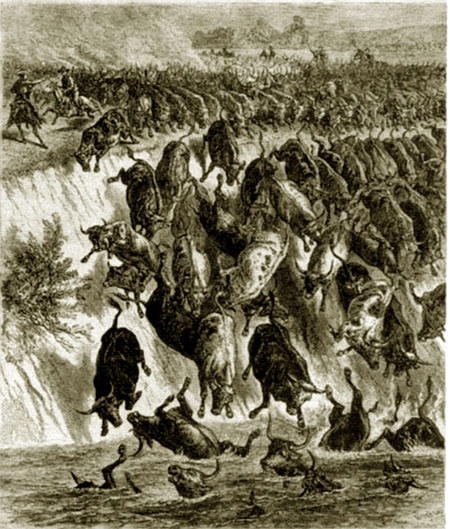
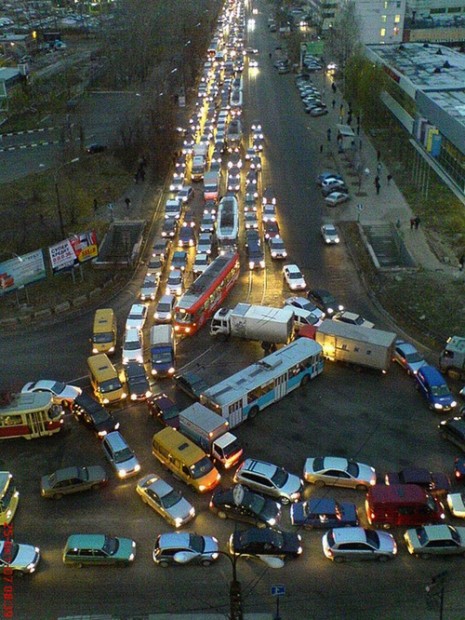

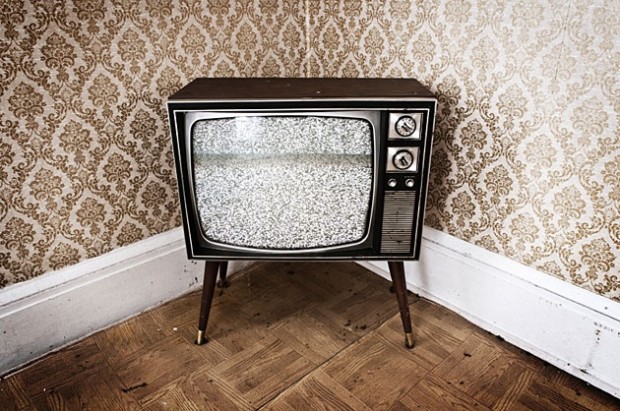

6 comments
As always, a great story. Thanks Beth!
Great article, Beth! (As always – the first thing I do when I get Glasstire is see if you have written anything) But…. I was listening to NPR that morning as well and it was Bob Edwards who made the initial announcement and stayed on the air long after his usual sign-out time. I’ve been a fan of his since the beginning of “Morning Edition” but I will always associate his voice with 9/11.
I stand corrected. Thank you.
Yes, Beth, you can capture the moment and make us recall our own tribulations. A consummate storyteller. Thank you for sharing.
You might appreciate this, Beth. Ramon and I had seen the second plane hit the Towers on the news at home. Both of our employers were going to keep the offices open and we both left for work in confusion. I may be making this up, but I really think that on my way in, late to work, the third plane hit the Pentagon. When I got there, those of us who actually made it to the office tried to keep up with what was happening in the outside world on a jambox radio. As there were no televisions with any kind of reception the office, a colleague’s boyfriend was calling in the events to us as they happened. One call was that the top of one of the towers was leaning and the next was that it fell to the ground. It was then that we all decided that we needed to go home and be with friends or family. No visitors came to The Orange Show that day.
I absolutely do appreciate it. I so wanted to be home with my family, but I was so far away, and luckily some of the people I worked with were the greatest, the next best thing to family, maybe in some cases even better.